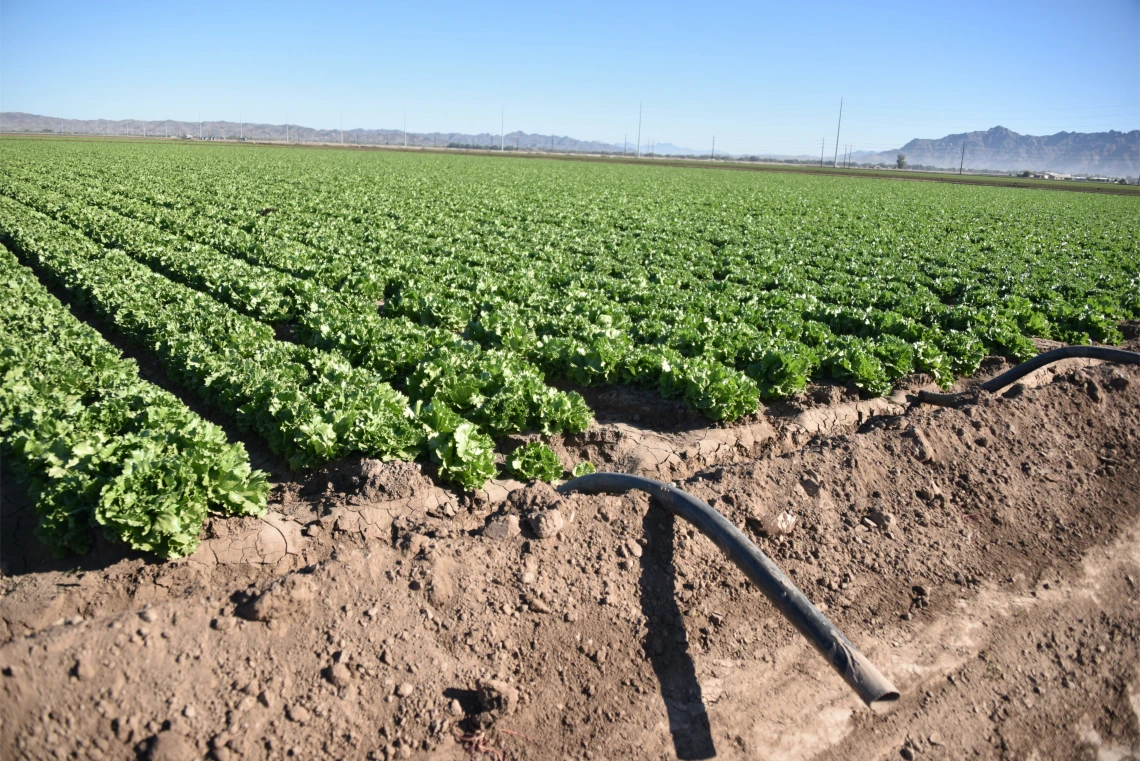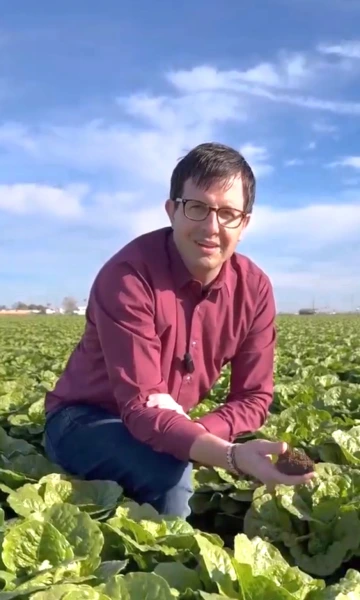A long-term research investment in the science of arid soil health
The Desert Agriculture Soil Health Initiative (DASHI) seeks to fill critical knowledge gaps and develop solutions tailored to desert cropland soils.

If you’ve eaten a salad during the winter months, chances are those leafy greens were grown in Yuma, Arizona. Known as America’s “Winter Salad Bowl,” the region produces more than 90% of the leafy greens consumed across the nation between November and March. According to a recent study, Yuma County ranks third nationwide in sales of vegetables, melons, potatoes and sweet potatoes, and contributes $4.4 billion to the state’s economy.
And yet, growers and soil scientists know comparatively little about the health of its soil. That’s something Joseph Blankinship, an associate professor in the Department of Environmental Sciences, hopes to change.
“Most of the science on soil health has been developed in wetter climates, like those in the eastern U.S. and the American Midwest,” he said. “We have very different soil properties and a very different environment in the Southwest, and we need different ways of assessing and managing soil health.”

Blankinship has partnered with public and private stakeholders across southern Arizona to form the Desert Agriculture Soil Health Initiative (DASHI), a robust, long-term research program that will address the region’s need for insights into soil health for arid and semi-arid climates.
He explained that Yuma is an ideal site for this kind of research program. It’s the home of the Yuma Center for Excellence in Desert Agriculture, an innovative public-private partnership between scientists and producers that focuses on the challenges of arid-land crop production and one of DASHI’s close collaborators. Yuma is also one of the most connected agricultural regions in the world thanks to the 2024 launch of corner-to-corner in-field wireless internet, which enables real-time monitoring and precision crop management.
Since its inception in 2023, DASHI has hosted several workshops around southern Arizona to identify priorities and set strategic program goals. Now, Blankinship and his partners are ready to get their hands dirty with an inaugural soil health assessment in the spring, which will establish baseline markers for the region’s soil health and provide valuable data about current soil management practices.
Blankinship believes that investing in this kind of long-term research will not only pay dividends for local producers seeking to make the most of the region’s resources as the climate becomes hotter and drier, but for growers across the globe.
“Roughly 60% of the world’s food supply comes from arid or semi-arid climates,” he said. “If we can understand how to preserve and improve soil health in these regions, we can make the food supply more sustainable, more resilient in the face of challenges like water scarcity and climate change.”
